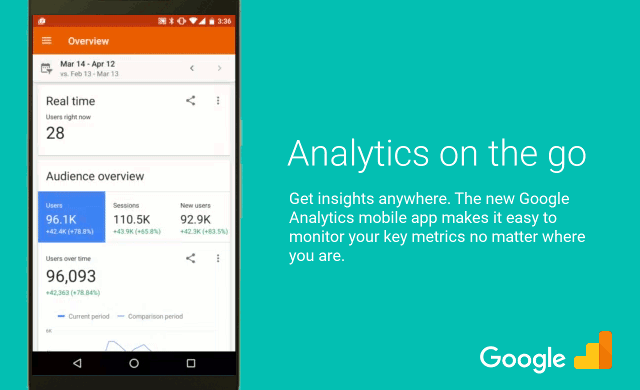Your marketing strategy isn’t single channel so why should your measurement practices be? Looking at marketing performance one channel at a time no longer makes sense. In today’s complex, micro-moment, cross-screen landscape, the lines between marketing efforts are blurred. Traditional marketing and digital marketing overlap, with investments online delivering results offline, and vice versa. Cross-channel marketers have an opportunity to shift away from channel-by-channel thinking to better understand how to optimize their entire marketing strategy.
Google Attribution 360 allows you to measure and optimize marketing spend for all channels, online and off, at once. Use it to uncover insights, make a true impact on the customer journey, and improve ROI.
The Digital Attribution, Marketing Mix Modeling, and TV Attribution capabilities within Attribution 360 allow you to analyze all your available data streams and create a highly accurate model of your full marketing efforts.
- Digital Attribution helps you combine and interpret siloed data sources, apply data-driven attribution modeling, and optimize your digital marketing mix. Rather than using a limited first-touch, last-touch, or arbitrary rules-based model, Digital Attribution awards the appropriate credit to each and every touchpoint on the customer journey.
- Marketing Mix Modeling adds a top-down, aggregated view of performance across all channels, including media such as radio, television, print, out-of-home, and digital. You’ll also get insights into how external factors such as economic conditions, seasonality, and competitive actions impact your marketing efforts.
- TV Attribution helps business relying on TV to build awareness and demand to integrate digital and broadcast data and understand their cross-channel performance. Down-to-the-minute TV ad airings data is analyzed alongside digital site and search data to reveal the attributable impact of specific broadcast ad placements.
Here’s how one of our customers, Open Colleges, uses Attribution 360 to make the connection between TV and digital advertising.
Google Attribution 360 helps Open Colleges see how TV ads turn into online leads Open Colleges, Australia’s leader in online learning, felt television advertising could be a powerful tool to reach its audience, but in a data-driven and lead-driven culture they found it difficult to measure and justify the actual impact of TV ads. They wanted to see how TV ads translated into real leads, understand the cross-channel customer journey, and find new opportunities in their marketing mix. That’s when they turned to Google Attribution 360.
For three months in 2015, the team tested Attribution 360 with a series of TV campaigns focused on their key user base of women aged 25-54 who are looking to enhance or change their careers. They ran ads on a variety of TV programming — cooking shows, series, soap operas, and news and morning shows.
Getting results With Attribution 360, the Open Colleges team could see clearly what was engaging TV viewers and driving them to search. While news and morning shows delivered larger impression volume, light entertainment shows like Ellen and Grey’s Anatomy had higher impact on leads. Open Colleges also learned that while Saturday was their most engaged day, Monday and Tuesday spots were more cost-efficient by an average of 12%.
“We gained insights into day-parting, 15-second versus 30-second spots, and campaign flighting — just a level of insights we’ve never had before,” says Matt Hill, Head of Brand & Communication for Open Colleges.
They also learned that dual-screen TV viewers were far more engaged on mobile than on desktop, and far more engaged on smartphones than on tablets.
“People sitting on the couch who see a TV ad, they’re not going to run and get their laptop,” notes Hill. “They pull out their phone and search for us right there.” In prime time (6-10pm), for example, 81% of attributed visits were from mobile.
Making adjustments As results came in, the Open Colleges team made adjustments to campaigns, ad buys and creatives to capitalize on what they learned. The realized they had to make sure their online ads were at or near top position for web searches using keywords like online courses any time their TV ads were driving response. “Your search bidding strategy has to be aligned with your TV activity,” says Hill. “If your TV ad drives a mobile user to search for online education and you aren’t there, you won’t make the most of your investment.”
In the first three months, Open Colleges saw a significant uplift with its key target audience of women aged 25–54. As a result, the team is now testing many new approaches, like targeting smaller audiences in Western Australia, trying programming alternatives at off-peak hours, and exploring the hours where 15-second ads get the best ROI.
“Traditional metrics just don’t cut it anymore,” says Hill. “You need to understand what your marketing dollars are doing for you in detail, and TV attribution has given us the visibility and confidence that TV does deliver against hard business metrics. If you’re serious about understanding the pathways to conversion and the full impact of your offline spend for maximum ROI, Attribution 360 is a must.”
Read
the full case study with Open Colleges for more details.
Stay tuned for more updates on Attribution 360 as we continue to invest in new and exciting capabilities.
Posted by Dave Barney, Product Manager, Google Attribution 360 











